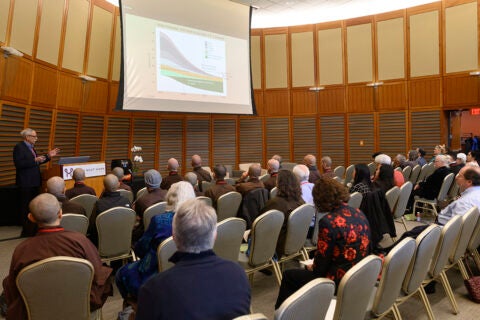Centers and Institutes
Standing Committee on Advancing Science Communication at The National Academies of Science, Engineering, and Medicine
The Standing Committee on Advancing Science Communication brings together the diverse disciplines of science communication research and practice. Together, we work to more effectively engage all communities with science in ways that are equitable, evidence-based, and inclusive.
Center for Community-Based Research
CCBR at the Dana-Farber Cancer Institute develops innovative ways to lower cancer risk by working with community groups and organizations. The Center uses the power of the community to study factors that play a role in improving prevention, early detection, and treatment of cancer.
Harvard Prevention Research Center on Nutrition and Physical Activity at HSPH
The HPRC is one of 33 Prevention Research Centers funded by the national Centers for Disease Control and Prevention (CDC). The Center’s mission is to work with community partners to design, implement, and evaluate programs that improve nutrition and physical activity, reduce overweight and reduce chronic disease risk among children and youth. HPRC projects involve community partners in every phase, from brainstorming to evaluation. Long-term goals are to build community capacity to implement and evaluate effective prevention programs and to advance national knowledge regarding interventions that promote nutrition and physical activity.
Center on Media and Child Health at Children’s Hospital Boston, Harvard Medical School, and HSPH
The Center is dedicated to understanding and responding to the effects of media on the physical, mental, and social health of children through research, production, and education.
Viswanath Lab
Based in Dana Farber’s Center for Community Based Research, the Viswanath Lab focuses on examining and defining the role of communication across the cancer continuum — from prevention and detection, to diagnosis, treatment, and survivorship. Our group has a particular interest in how inequalities in the distribution of communication resources and channels relate to health disparities.
Center for Health Communication at HSPH
The Center for Health Communication has helped pioneer the field of mass communication and public health by researching and analyzing the contributions of mass communication to behavior change and policy, by preparing future health leaders to utilize communication strategies, and by strengthening communication between journalists and health professionals. Projects at the Center include the Harvard Alcohol Project, which helped introduce the designated driver concept to the U.S.; Squash It! Campaign to Prevent Youth Violence; Harvard Mentoring Project; and HSPH-MetLife Foundation Initiative on Retirement and Civic Engagement.
Health Literacy Studies at HSPH
Health Literacy Studies is located in the Department of Social and Behavioral Sciences at HSPH and is part of the National Center for the Study of Adult Learning and Literacy. The group is engaged in a variety of research and implementation studies focused on communication and literacy skills to explore the pathways from education to health outcomes, to determine literacy-related barriers to a variety of health services and care, and to identify skills needed to access care, manage chronic diseases, and participate in disease prevention activities.
Harvard SANCHAR
SANCHAR or Science and News: Communicating Health and Research, builds capacity and facilitates the adoption of practices to use evidence in public health communication and practice. Its goal is to enable journalists, public health practitioners and other actors to draw on the latest science and data in what they do in shaping public knowledge, attitudes and policy on health.



